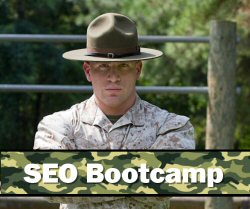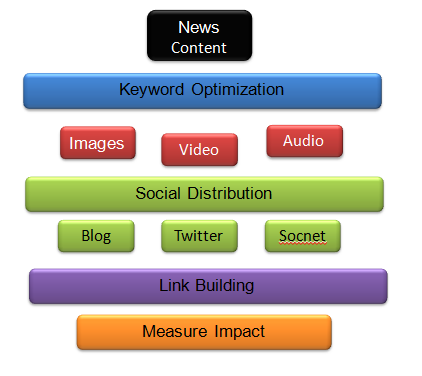 I’m here at the PRSA International conference in Washington D.C. and the conversations about social media are to be found everywhere. The halls, the exhibit floor, sessions and even at the fantastic dinner hosted by Shonali Burke last night.
I’m here at the PRSA International conference in Washington D.C. and the conversations about social media are to be found everywhere. The halls, the exhibit floor, sessions and even at the fantastic dinner hosted by Shonali Burke last night.
Yesterday I gave a 4 hour workshop or, “SEO Bootcamp for Communicators” as it was titled. I polled the attendees who came from a variety of companies and organizations ranging from a for profit private school to the Veteran’s Administration, on what their questions were about SEO. Most revolved around getting to understand how PR can get up to speed on the value of SEO and incorporate it into what they’re doing as Marketing has done.
To that end, one of the things I touched on in the workshop and that I will also address in a solo presentation today on Social Media Optimization, is a model for incorporating Social Media & SEO into news promotion.
- Objectives: What are your goals? You can’t finish your mission without an end goal, so it’s important to identify some kind of general website traffic, citations, links, social engagement and organic referring traffic goals.
- Audience: Who are you trying to reach? This question can be answered at a broad level in relation to online PR and news content as well as at the individual content level. Keywords and promotion tactics can vary whether it’s direct to consumer, journalists, analysts or bloggers that you’re after.
- Social Conversations & SERPs: Listening to social conversations about the topics important to your company, brand and constituents is essential for knowing where to engage and promote. Think of it as reconnaissance. The SERPs, (Search Engine Results Pages) are your SEO battlefield and it’s important to understand what types of content is being displayed for your most important keyword phrases. While personalization is a factor that can make the SERP experience vary according to your location and web history, it still makes sense to identify what media types are included: web pages, images, video, blog posts, news, etc.
- Resources: Content, people, processes. What content and media do you have to promote? If you put out a press release, adding images and/or video can increase distribution quite a bit. Who do you have available to you to help? Copywriters, IT, marketing. Adding SEO and Social Media components to content authoring and publishing processes will ensure more of your content goes out in an optimized state.
- Tactics: What channels to optimize? This is where information captured in Listening and SERPs helps you decide what kind of content and which social channels to optimize for. If news, images and video are represented in the search results and there are relevant conversations happening around social media sites including some or all of those media, then your “marching orders” are to leverage those types of media in your news optimization.
- Measure: SEO, Social, PR. Knowing when you’re a success is important for productivity as well as reporting upstream in your organization. Setting goals, making benchmark measurements and then tracking progress as skills and effectiveness are refined will help you stay on track.
When companies and individuals enter the Social Media and SEO waters, it’s often very tactical and tentative. Testing is fine of course, but making the effort to establish some kind of framework and process can reap big efficiency / effectiveness rewards.
One way to increase adoption and results is to develop a process that is followed by anyone in communications, media relations or PR that is in a position to publish content online. The form of this process will vary, but here’s an example:

By adding a process, it adds accountability as well as the likelihood that a much greater quantity of content will be keyword optimized and promoted to extend the reach of news direct to end consumers as well as to journalists and reporters doing online research.


